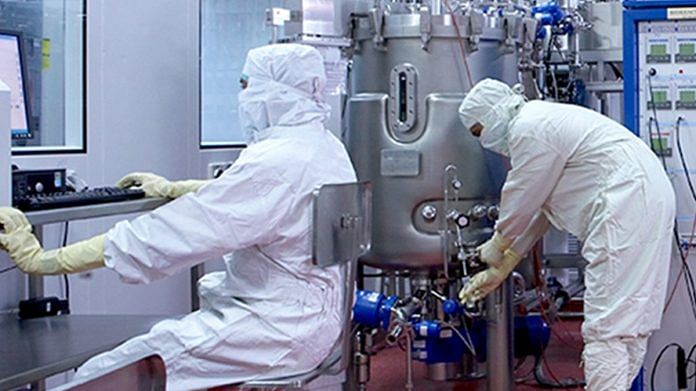Bengaluru: Excitement has been building on Oxford’s potential Covid vaccine after news portal ITV Thursday reported that positive data had been observed and will be released soon.
Additionally, the director of the Jenner Institute at the University of Oxford, which is developing the vaccine, said the “best scenario” would see final trial results in August and September, and vaccine rollouts in October, reported The Telegraph.
“I am hearing there will be positive news soon (perhaps tomorrow) on initial trials of the Oxford Covid-19 vaccine that is backed by AstraZeneca and supported by tens of millions of pounds of government money,” ITV’s political editor Robert Peston wrote.
“The first data is due be published in The Lancet,” the report said.
However, The Lancet has since clarified that the data will be released only Monday, according to a Reuters report.
The vaccine is currently in a combined Phase II/III trial in UK and Phase III trials in Brazil and South Africa. However, the vaccine developers are yet to release findings from their Phase I trial — which establishes safety, checks for commonly expected side-effects and confirms whether an immune response is induced.
“Apparently the vaccine is generating the kind of antibody and T-cell (killer cell) response that the researchers would hope to see,” wrote Peston.
The ongoing work into Phase II and III began based on past established safety.
The vaccine is being licenced and manufactured currently in partnership with AstraZeneca.
Pune-based Serum Institute had also announced plans of mass producing the vaccine in India.
Also read: Covid vaccine could come by 2020-end but realistic time-frame would be 2 yrs: Adar Poonawalla
Trial details
The Oxford Vaccine Group recruited 1,102 participants for the Phase I trials in April in the UK. The vaccine administration and immunisation were concluded in May and observations to see if anyone contracted the disease have been ongoing.
Phase I trials to establish safety need to proceed slow. Multiple people cannot be vaccinated together, and the trial itself involves very few participants.
For the first two days, the trial only vaccinated two and six patients, respectively, monitoring each group for two full days before proceeding. Participants logged their symptoms for three weeks and had multiple follow-up visits that included bloodwork.
Due to ethical reasons, directly exposing people to a virus (called human challenge trials) is forbidden typically. It is unclear if these will commence at some point due to the emergency nature of this pandemic.
A preclinical trial in pigs showed that two doses produced a boosted antibody response than a single dose.
At the end of June, a Phase III trial, which enrols thousands of participants to test and establish efficacy, commenced in Brazil using healthy volunteers. The trial recruited 5,000 candidates.
Meanwhile, over 4,000 participants in the UK are undergoing the trial, with a planned addition of 10,000 more. An additional Phase III trial has also commenced in South Africa.
Also read: Serum Institute tells Modi govt how pandemic is affecting clinical trials of non-Covid drugs
How the vaccine works
The Oxford vaccine is officially called the ChAdOx1 nCoV-19, and named AZD1222.
It is a viral vector vaccine which uses a common-cold causing virus ChAdOx1. The weakened form of this adenovirus, which causes infections in chimpanzees, has been genetically changed so that it cannot replicate in humans.
Furthermore, many strains of adenoviruses already circulate in the human population, although humans do not have antibodies to this particular strain, enabling antibody response.
For working against Covid-19, the spike protein of the SARS-CoV-2 virus has been inserted into the ChAdOx1 virus in this vaccine.
“By vaccinating with ChAdOx1 nCoV-19, we are hoping to make the body recognise and develop an immune response to the spike protein that will help stop the SARS-CoV-2 virus from entering human cells and therefore prevent infection,” say the developers.
The speculation of the production of B cells and killer T cells is good news for the vaccine. B cells and T cells are triggered when the body’s adaptive immune response kicks in, provoking a strong immune reaction. Killer T cells, called cytotoxic T cells, are responsible for destroying infected cells in our bodies, and B cells are responsible for producing antibodies.
B cells and T cells can also produce memory cells, which remember the virus and can produce a robust and quick immune response upon encountering the virus again.
Also read: CanSino, Moderna, Novavax: A list of Covid vaccines under clinical trials across the world



